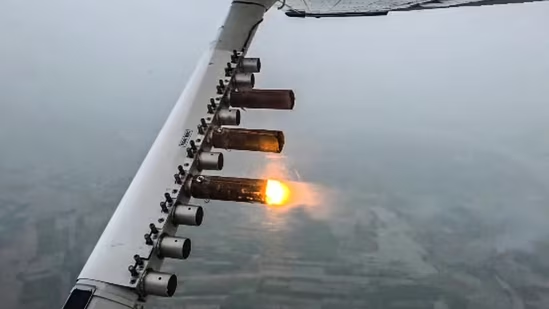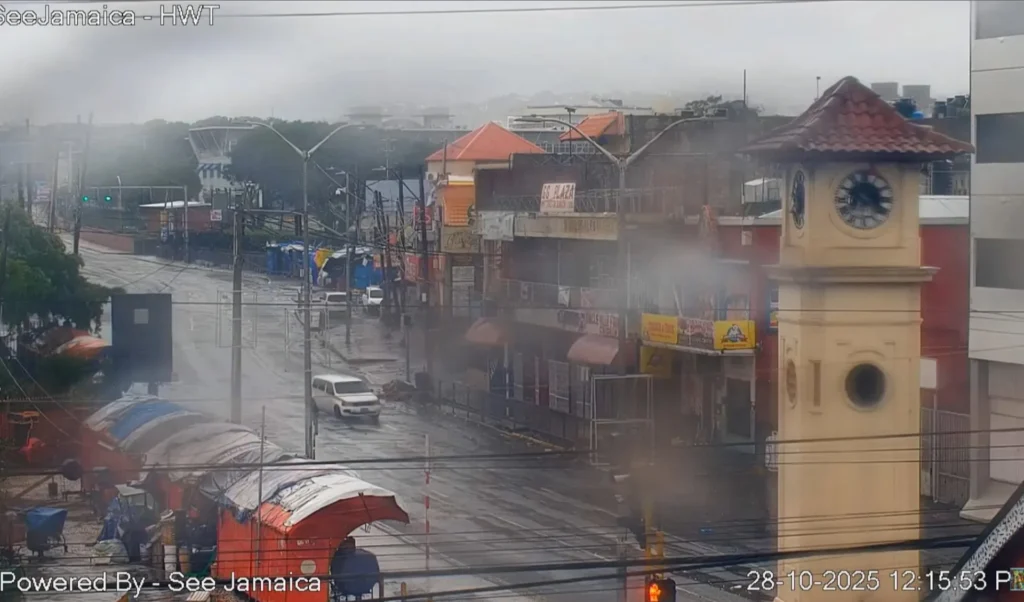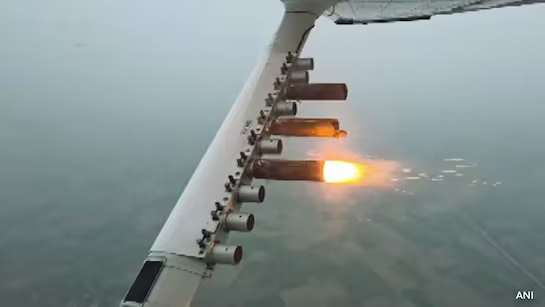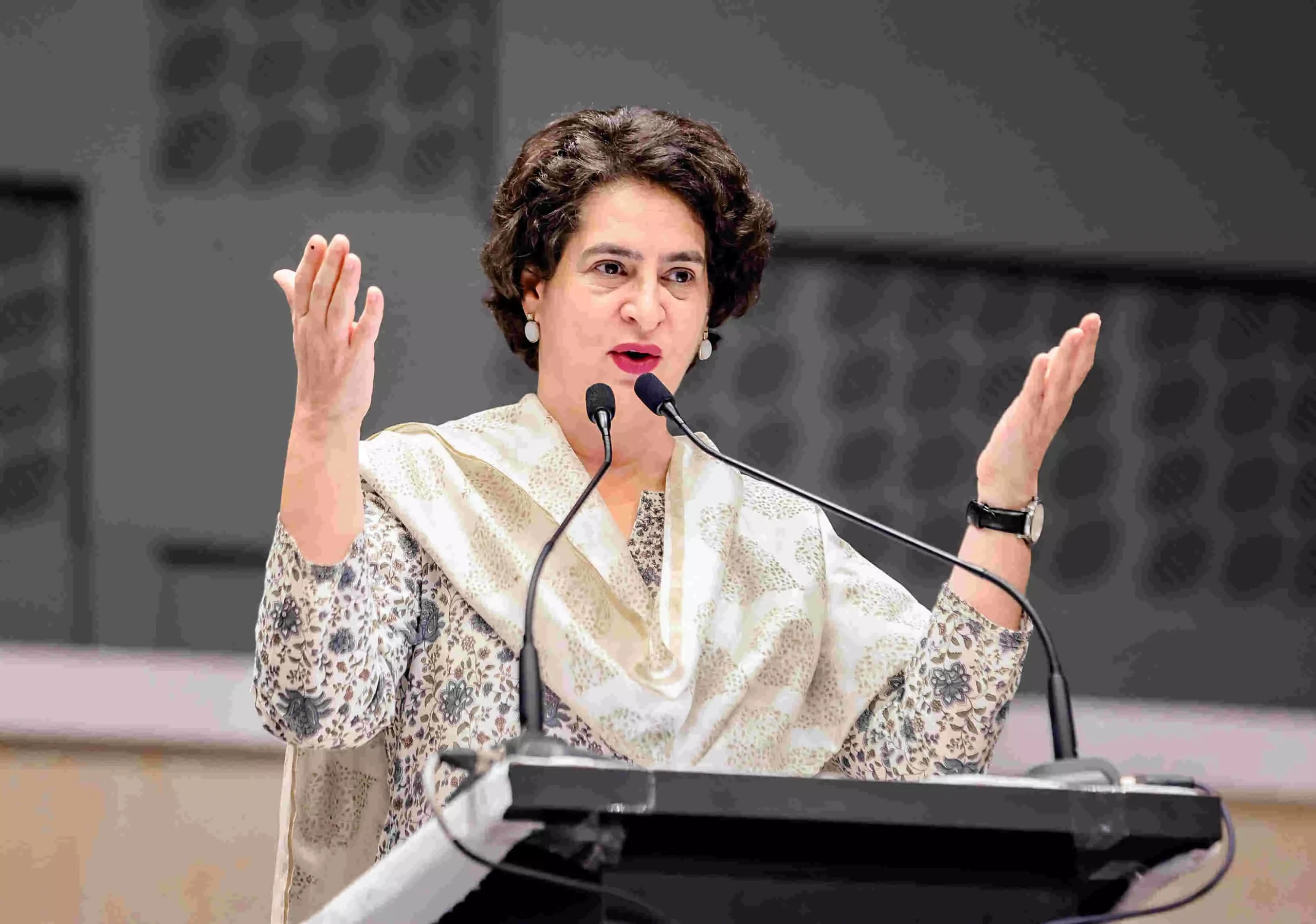Now Reading: Cloud-seeding over Delhi: Two sorties, 16 flares and a ₹1.28 crore experiment that failed to bring rain
-
01
Cloud-seeding over Delhi: Two sorties, 16 flares and a ₹1.28 crore experiment that failed to bring rain
Cloud-seeding over Delhi: Two sorties, 16 flares and a ₹1.28 crore experiment that failed to bring rain

In a bold effort to clear the smog-choked skies of India’s capital, the Delhi government launched its first full-scale cloud-seeding operation, deploying aircraft to release chemical flares over the NCR region. But the ambitious attempt ended with barely a drizzle. What this means for cities beyond the metro and the merit of such interventions are now under serious scrutiny.
The experiment in detail
On a single day two aircraft took off — one from Kanpur and another from Meerut — each firing eight flares of silver iodide and salt compounds over north-west Delhi and Noida. The trials lasted about half an hour per sortie. The total cost for the two flights: approximately ₹1.28 crore. Sightings of rainfall were minimal — traces of 0.1 mm in Noida and 0.2 mm in Greater Noida were the only measurable output.
Why the outcome was poor
Authorities point to low moisture levels in the clouds — estimated at 10–20 per cent — as the major reason for failure. Cloud-seeding requires a certain threshold of humidity and the right cloud structure to succeed; without that the chemical nuclei released cannot trigger effective condensation. Experts caution that the weather conditions in late autumn and early winter are not always conducive for such methods.
What this means for other cities and regions
While Delhi is the focus of this experiment, the implications reach smaller cities too. For tier-2 cities like Nagpur, where pollution spikes and weather-interventions may be seen as possible solutions, this result signals caution. The high cost and uncertain outcomes raise questions about replicability and value. Local governments and communities must weigh whether such high-tech fixes are sustainable, or whether resources should instead go to proven pollution-control and weather-mitigation infrastructure.
Cost, expectations and next steps
Per-sortie cost is estimated at ₹60 lakh, with the winter campaign projected to cost up to ₹25–30 crore if repeated every ten days over several months. Officials say the aim is to record effects on particulate matter rather than rely solely on heavy rain. Even so, critics argue that the experiment’s poor performance may shift attention back to foundational issues—traffic emissions, construction dust, crop-burning and industrial smoke.
Conclusion
The cloud-seeding initiative in Delhi showed ambition, but its outcome was modest. The experiment underlines that fancy interventions are no substitute for deeper environmental reforms. For smaller cities across India, the lesson is clear — understanding local weather and pollution dynamics, managing expectations and investing in long-term solutions matter more than one-off experiments.

























